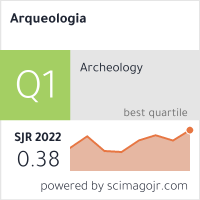A proposal for a lithic raw material classification in Patagonia (Argentina)
Keywords:
Lithic raw materials, Argentinean Patagonia, Macrocopic identification
Abstract
Lithic remains are the most preserved materials in the archaeological record. In Patagonia, lithic technology research has a long history. However, there is not a general agreement among scholars regarding a common denomination of lithic raw materials suitable for artifact manufacture. This result in a widely known problem among lithic analysts: a difficulty to compare several study areas or even investigations in the same area conducted by different colleagues with diverse criteria. This paper proposes a macroscopic classification scheme for lithic raw materials suitable for the manufacture of artifacts by flaking and pecking, grinding and polishing from Patagonia. This study starts with an exhaustive literature review and is based on permanent interaction with geologists specialized in mineralogy and petrography. Additionally, we consulted archaeologists working in Patagonia. Therefore, this paper proposes a scheme including all mineral and rock types cited in the consulted literature, their genetic classification, approaches for their identification, and previously used equivalent terms.Downloads
Download data is not yet available.
How to Cite
Alberti, J., & Fernández, M. V. (1). A proposal for a lithic raw material classification in Patagonia (Argentina). Arqueología, 21(2), 211-235. https://doi.org/10.34096/arqueologia.t21.n2.2236
Section
Articles
Authors who publish in this journal agree to the following conditions:
- Authors retain copyright and yield to the journal right of first publication with the work registered with attribution license Creative Commons, which allows third parties to use the published always mentioning the authorship of the work and first publication in this magazine.
- Authors can make other independent and additional contractual arrangements for the non-exclusive distribution of the version of the article published in this issue (p. Eg., Inclusion in an institutional repository or publish it in a book), provided that clearly indicate that the work was published for the first time in this magazine.
- It allows and encourages the author / s to publish their work online (eg institutional or personal pages) before and during the process of revision and publication, as it can lead to productive exchanges and greater and more rapid dissemination of work published (See The Effect of Open Access).





(1)13.png)






1.jpg)
1.jpg)


13.png)
1.png)


(1)1.png)









